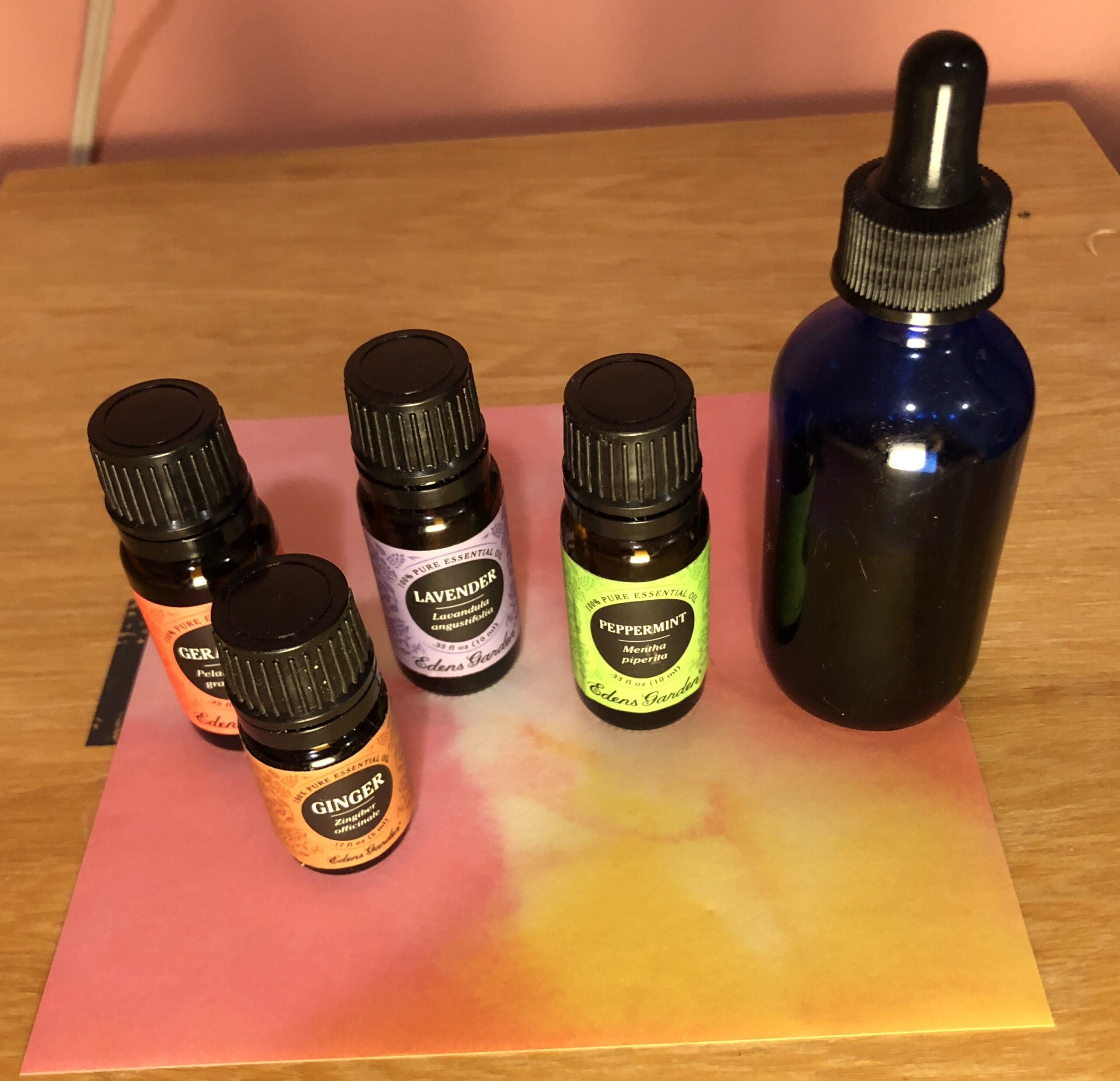Smell and the 5 senses
Aromatherapy is a very popular complementary and alternative method of healing that activates the olfactory centers of the brain.
The olfactory “smell” centers have a close connection with the hippocampus and limbic system of the brain and certain smells may help create memories and elicit an emotional response.
Essential oils also are made up of multiple terpenes which are bioactive chemicals that may influence physiological functions. Linalool and Linalyl acetate are terpene components of Lavender essential oil, which is famous for its calming properties.
Aromatherapy has been explored for its psyocho active benefits for depression and anxiety, and antibacterial and antiviral properties. It has also been used in settings of chronic pain, painful periods, elevated or low blood pressure, and or respiratory illnesses to name a few.
Aromatherapy can be utilized via smell through an diffuser, topically, and via ingestion. For those who are not working with a certified aromatherapist it is best to avoid ingesting essential oils on your own as some EOs are consider lethal upon ingestion.
Often times aromatherapy can be used by filling a diffuser with water and placing a couple drops of the chosen oil in and running the machine. Examples would be lavender oil for calm. Peppermint oil for focus or energy. Rosemary oil for studying and memorizing to improve recall.
Topical mixtures can be easily made at home by mixing essential oils in a preferred carrier oil. Carrier oils typically are neutral smelling oils such as: almond, jojoba, argan, avocado oil to name a few.
An easy place to start is by creating a 2% dilution.
✅Get a small 2 oz glass bottle with dropper. Darkened bottles are preferred as light exposure may effect the shelf life of the oil.
✅Fill it halfway with your preferred carrier oil
✅Place 20-24 drops of your chosen essential oil in can be just one or a blend of essential oil types
✅Fill the rest of the bottle with carrier oil. Place top in and shake.
✅If you have not used an essential oil on the skin before it would be best to place it only on a small discreet area of the skin and see if there is any skin irritation afterwards before applying it to other parts of the body.
✅Avoid placing essential oil mixes directly on any sensitive areas of the body, i.e. oral, eyes, nostrils, genital regions. If you are placing any on the face consider lowering the dilution further to 1% (10-12 drops in a 2oz bottle).
Here are some suggestions on mixes to make:
Headache solution (peppermint oil) rubbed along the temples.
Relaxing massage oil (lavender oil and consider adding some ylang ylang) rubbed into neck, shoulders, or wrist area.
Muscle relief and Painful Periods (combination of peppermint and lavender rubbed into back or abdominal area).
Digestive relief (combination of peppermint and ginger).
There many different essential oils out there and please make sure you purchase them from a reputable source. Otherwise, learning to make your own special recipes can also be quite fun.
Caution should be taken when aromatherapy is being used with elderly, frail, children and or pets as higher dilution rates closer to 1% are recommended. When in doubt always seek out a medical physician and or certified aromatherapist for proper advice.
Consistent research work on essential oil use and effectiveness remains challenging due to a variety factors in consistency of its manufacturing and sourcing of raw material which may create unique blends of EO’s but cannot but consistently test with multiple groups of patients in clinical trials.
Lavender oil = helps with calm
Rosemary oil = helps with focus and memory
Peppermint oil = helps with improving alertness and focus
Ginger oil = helps with digestion
Ylang ylang = helps with hormonal balance and hormonal transitions
